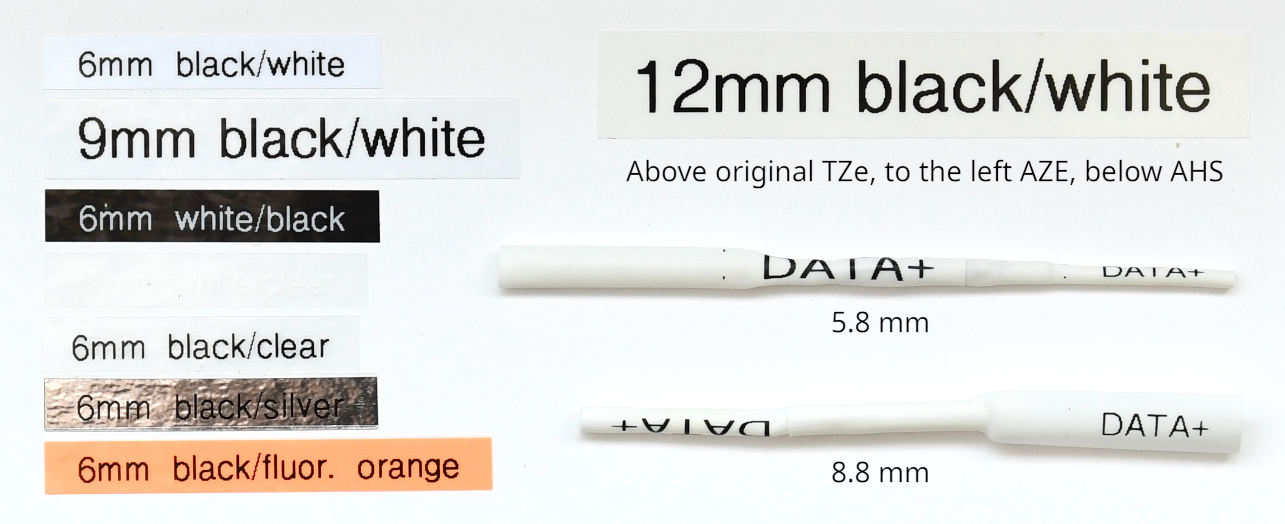
Brother PT-H110
Initially I was afraid of thermal transfer label printers, because of some first hand experience with the industrial ones and how fiddly they are to set up, however the handheld ones almost don’t suffer from any such problems at all. At most you might need to realign the laminating layer manually (I’ve successfully used a toothpick to remove and reattach it), as it likes to be off by a fraction of a millimeter. I’ve also noticed that new tapes take a while to center properly on the print head, but do so by themselves.
A problem I hadn’t anticipated is the long distance between the print head and the cutter. Basically each label in a set wastes several centimeters on that, and then you have to take out scissors to finish by hand what’s supposed to be the printer’s job.
Tapes
I only have one original tape, which came as a sample with the printer—Chinese knock-offs are generally quite high-quality, but more importantly cheaper by about an order of magnitude. Even the fluorescent one is what it says, in daylight conditions. As a side-note, the tapes sold by the Czech green annoying faggot alien that I’m unwilling to name are also AZE, just with a laughable mark-up.

The only issue I’ve encountered is that the 5.8mm heat shrink tube needs to have one hole covered before it can be used in my PT-H110 printer. This hack makes the printer think this is an 8.8mm tape, so it uses the same size of fonts, or more precisely set of sizes.
Comments
Use e-mail, webchat, or the form below. I'll also pick up on new HN, Lobsters, and Reddit posts.